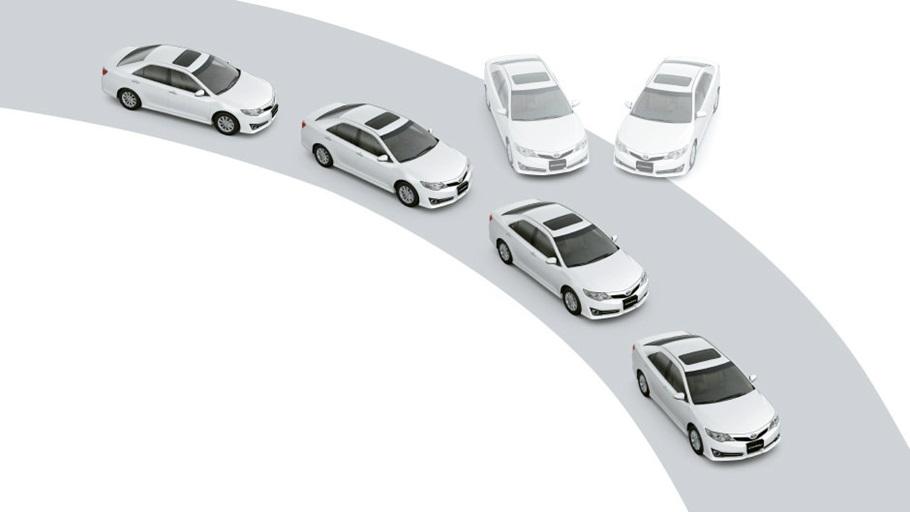The traction control system (TCS) is an active vehicle safety feature. It prevents the loss of traction of the wheels driven on roads. It becomes active when the engine torque and throttle input do not match the surface you are driving.
But, what does traction control mean? Well, it is a method that limits the power supplied to the wheel to apply traction on the car wheels – making them stop spinning. It utilizes all the traction available on the road when the vehicle accelerates on low-friction road surfaces.
Contents
What Is Traction Control System?
The TCS is an active vehicle safety feature that is standard in modern automobiles. Being a secondary function of a vehicle’s electronic stability control (ESC)*, the onboard system kicks in when the acceleration picks up. It prevents the tires from slipping when the car speeds up.
Traction control comes in handy in bad weather conditions involving rain, ice, or snow and on slippery surfaces that offer little to no grip. Drivers have to feather the gas pedal in old cars with no TCS system to prevent the wheels from wildly spinning on tricky roads. It allows them to build up speed without losing grip. But, modern vehicles equipped with this technology allow drivers to accelerate under control by limiting power delivery to end wheel slip.

The system makes the driver exercise better control over their car. It reduces the risk of losing control of the back end while accelerating and oversteering during driving around a corner. When the TC light blinks during operation, the driver knows that traction control technology is active and tries to prevent one or more wheels from spinning faster and causing instability. This often occurs when the vehicle accelerates rapidly through bends, forcing the wheels to slide horizontally and possibly creating a risk of an accident.
*ESC is a computer-operated feature in modern vehicles. It adds to the stability upon finding out the loss of traction and then reducing it.
How Does Traction Control Work?
Unless you are driving a very old car, the chances are that it has a traction control system. It is in operation and assists with safe driving without you realizing how it works.
Well, the mechanism is quite straightforward if you pay attention. Its operation is quite similar to the anti-lock braking system (ABS) and the components of the two systems are also similar. The TCS has a wheel speed sensor that supervises the rotation speed of either the front or all four wheels. The hydraulic modulator drives the brakes while the ECU (electrical control unit) monitors the data from wheel speed sensors and steps in to command the hydraulic modulator if necessary.
In modern vehicles, the ABS and TCS are considered to be one unit as the latter is an add-on to the ABS setup. The ECU monitors the wheel activity. It checks whether anyone is rotating faster than the others – which indicates that the particular wheel is losing traction. On such an occasion, the ECU steps in to turn down the rotation of the problematic wheel. It commands the hydraulic modulator to pump the brake in quick succession to that specific wheel.
Some TCSs control the wheel spinning by depressing the engine power to the wheels that are about to lose traction. Once the condition is back to normal, the system returns to its regular operation – monitoring the wheel and rotational speed.
When the system cuts the engine power to control the skidding wheels, you may feel a pulsating sensation through the gas pedal. It is the impact of the TCS forcing the engine to adjust the wheel rotation speed. So, don’t be worried if you feel a vibration when driving on a slippery road.
Understanding the operation of the traction control system in the video:
The Right Time To Use Traction Control In Cars
The TCS is a standard safety feature in modern vehicles. It becomes active when the engine kicks off. The system interferes when there is a discrepancy between the wheel’s rotation speed and the vehicle’s speed.
The system is beneficial to any type of vehicle, irrespective of the powertrain they have. But, it does more harm than good in some situations. For example, when you drive the car from a standstill position in snow or sand, all the wheels slip, making the TCS cut the engine power too much. As a result, moving forward on such surfaces becomes very difficult.

Read more:
Most models have an option for switching off the TCS in such tricky conditions. Some cars don’t allow to deactivate it completely. But, they offer a setting for snowy or icy conditions or an option to increase the wheel spin if necessary. You have to turn off the system or apply the additional settings depending on the weather or the type of surface you are driving on.
So, to avoid loss of control, ensure body stability, and optimize tire traction, the traction control system should be enabled in most everyday driving situations. However, car owners can temporarily turn off this system to increase traction when traveling on snowy or muddy roads.
Traction Control Problem Symptoms
Learning about the symptoms will assist you in identifying if the system is having any trouble. The system rarely experiences any problem and you can still drive even if anything is wrong with it. However, you should be careful while driving on slippery surfaces with a dysfunctional TCS.
If there is a problem with the system, the traction control warning light will come on briefly after starting the engine. It can happen due to having a bad wheel speed sensor, faulty ABS, low air pressure, and driving with a mini spare tire.
In Conclusion
Along with ESC, the TCS traction control system is widely used in most vehicles. Traction control helps provide a safe driving experience throughout the driving process. Difficult terrain conditions such as muddy, and slippery … are some of the factors affecting the performance and safety of cars. The traction control system was developed to handle this problem. We hope that this topic will give you useful information.



